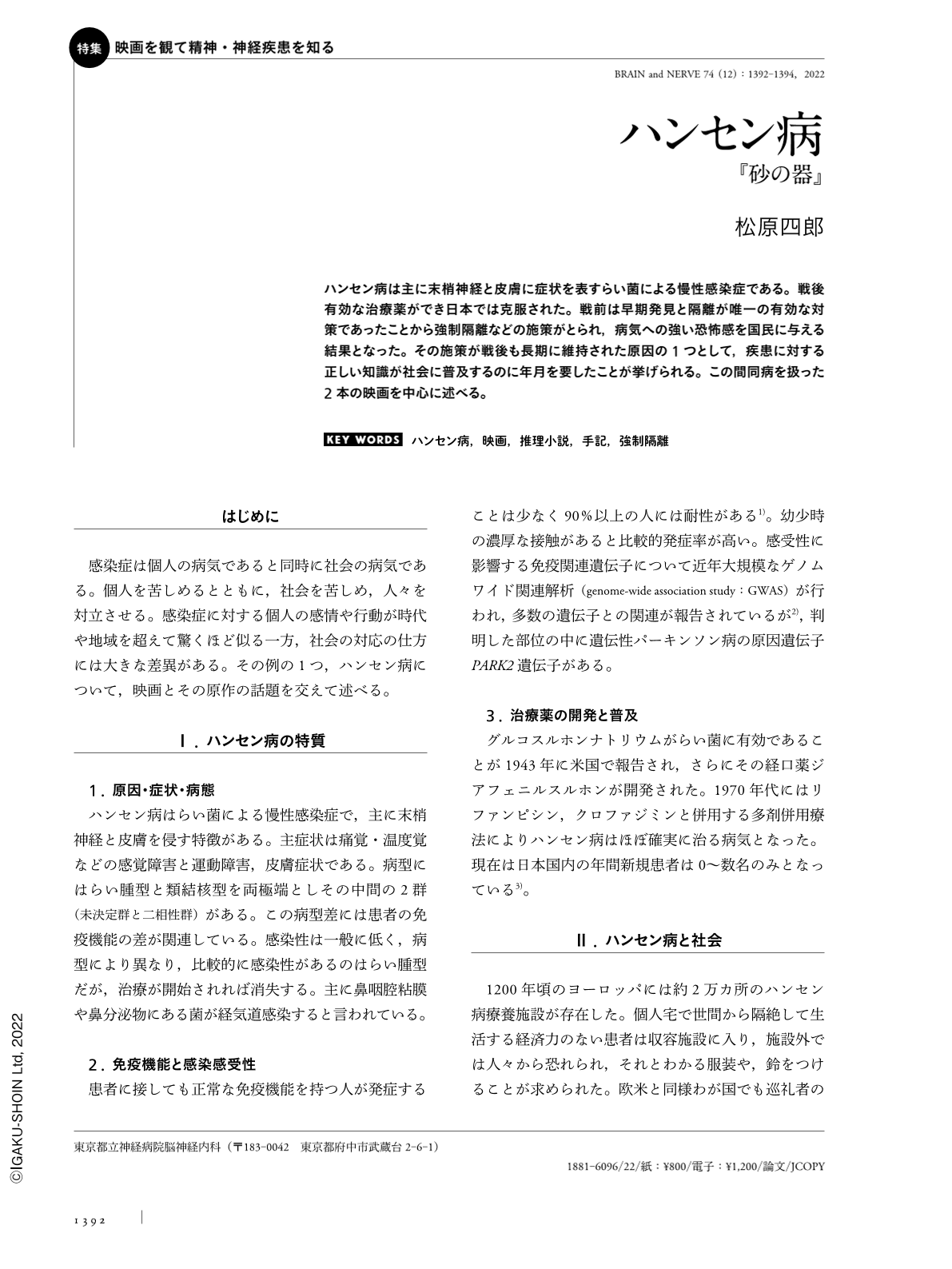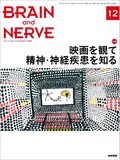Japanese
English
- 有料閲覧
- Abstract 文献概要
- 1ページ目 Look Inside
- 参考文献 Reference
ハンセン病は主に末梢神経と皮膚に症状を表すらい菌による慢性感染症である。戦後有効な治療薬ができ日本では克服された。戦前は早期発見と隔離が唯一の有効な対策であったことから強制隔離などの施策がとられ,病気への強い恐怖感を国民に与える結果となった。その施策が戦後も長期に維持された原因の1つとして,疾患に対する正しい知識が社会に普及するのに年月を要したことが挙げられる。この間同病を扱った2本の映画を中心に述べる。
Abstract
Hansen's disease (also known as leprosy) is a chronic infection that is caused by Mycobacterium leprae. It predominantly affects the peripheral nerves, skin, eyes, and nasal mucosa, Following the development of effective treatment with diaphenylsulfone followed by rifampicin, and clofazimine since 1940s, Hansen's disease has been eradicated in Japan. However, the longstanding stigma surrounding this disease, exacerbated partly by forced isolation and other regulations introduced in 1930s, has delayed the abrogation of these regulations. The influence of two Japanese films, namely Kojimanoharu (no English title; “Spring in Islets”) (1940) and Casle of Sand (1974), inspired by these events and addressing the concerns regarding this disease, are discussed.

Copyright © 2022, Igaku-Shoin Ltd. All rights reserved.


